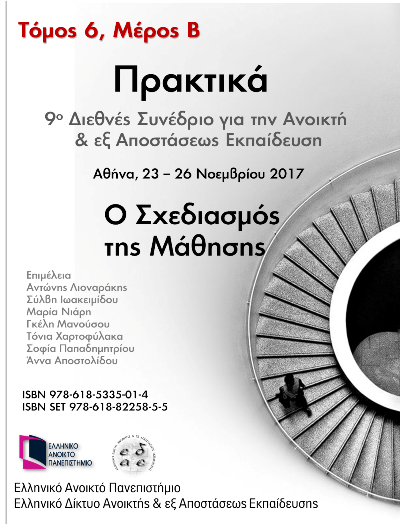Πρόταση διαδικτυακής διδακτικής προσέγγισης για το μάθημα των μαθηματικών του Γυμνασίου σχεδιασμένη με βάση το μοντέλο ADDIE

Περίληψη
Ο σχεδιασμός μιας διαδικτυακής διδασκαλίας αποτελεί μια σύνθετη και χρονοβόρα διαδικασία. Μολονότι δεν υπάρχουν συγκεκριμένες συνταγές για τη δημιουργία επιτυχημένων διαδικτυακών μαθημάτων, η χρήση σχεδιαστικών μοντέλων μπορεί να καθοδηγήσει τον εκπαιδευτικό να σχεδιάσει, να οργανώσει και να αναπτύξει την πορεία μιας διδασκαλίας. Στο παρόν άρθρο παρουσιάζεται μια διδακτική πρόταση στο μάθημα των μαθηματικών της Α' Γυμνασίου. Το μοντέλο στο οποίο στηρίχθηκε ο σχεδιασμός της και του οποίου τα βήματα αναλύονται είναι το ADDIE model. Η διαδικτυακή πλατφόρμα η οποία επιλέχθηκε είναι το Edmodo. Με τη βοήθεια της εκπαιδευτικής πλατφόρμας του Edmodo o μαθητής θα επικοινωνήσει με τους συμμαθητές και τον εκπαιδευτικό του, θα παρακολουθήσει βίντεο και παρουσιάσεις, θα αλληλεπιδράσει με τον Η/Υ μέσω του μαθηματικού λογισμικού Geogebra, θα συμπληρώσει φύλλα εργασίας και τεστ αξιολόγησης που δημιουργήθηκαν με τη βοήθεια του Εdmodo και της εφαρμογής HotPotatoes. Η αξιολόγηση εν κατακλείδι της διδακτικής πράξης κρίνεται απαραίτητη, γι αυτό και παρουσιάζονται βασικά κριτήρια στα οποία θα στηριχθεί η αποτίμηση της.
Λεπτομέρειες άρθρου
- Ενότητα
- Τμήμα Β


